Whyte S-150 Carbon RS - Review
Whyte's impressive S-150 Carbon RS 29er trail bike debuted at the Sea Otter Classic earlier this year, and I immediately put in a request for a test bike. After reviewing the 27.5-inch-wheel T-130C last season, I became a fan. The British brand is heavily influenced by the isle's long, low, and slack trend—but Whyte's savvy design team worked their magic on those rather coarse staples to maintain a light feel at the handlebar and also at the pedals, without eroding its gravity-friendly attributes.
The S-150 is Whyte's first long-travel 29er—a clean-slate design that incorporates lessons learned from the T-130 and takes its carbon/aluminum chassis one step further, partnering with RockShox to customize its steering geometry, boosting its suspension travel to 150 millimeters, and redesigning its aluminum four-bar rear suspension with double-strength clevis-type pivots throughout. Whyte also built enough tire clearance into the S-150 to allow customers to retrofit 27.5 Plus wheels with tires up to 2.8 inches, should conditions require more traction. Three builds are offered, all with SRAM Eagle 12-speed transmissions: S-150 Carbon Works at $6,499 USD, the S-150 Carbon RS, at $4,799 (reviewed here) and the aluminum-framed S-150 S at $3,499. Whyte says that the 2018 models will begin arriving at retailers around August this summer.
S-150C RS Details:
• Use: Trail/all-mountain
• Chassis: Carbon front section/aluminum 150mm four-bar suspension. Internal cable routing. Boost axle spacing
• Wheel size: 29" standard, 27.5"+ compatible
• Fork: RockShox Pike RC, 150mm stroke, custom 42mm offset
• Shock: RockShox Deluxe RT Debonair
• Transmission: SRAM GX Eagle 12-speed
• Wheels: Custom built with Whyte hubs, WTB i29 rims, Maxxis High Roller II (F), *Minion SS (R)
• Sizes: Medium (reviewed), large, X-large
• Weight: 29.14 pounds/13.25 kg (medium)
• MSRP: $4799
• Contact: Whyte USA, Whyte UK
*Maxxis Crossmark II 29" X 2.25" is the advertised spec.
• Use: Trail/all-mountain
• Chassis: Carbon front section/aluminum 150mm four-bar suspension. Internal cable routing. Boost axle spacing
• Wheel size: 29" standard, 27.5"+ compatible
• Fork: RockShox Pike RC, 150mm stroke, custom 42mm offset
• Shock: RockShox Deluxe RT Debonair
• Transmission: SRAM GX Eagle 12-speed
• Wheels: Custom built with Whyte hubs, WTB i29 rims, Maxxis High Roller II (F), *Minion SS (R)
• Sizes: Medium (reviewed), large, X-large
• Weight: 29.14 pounds/13.25 kg (medium)
• MSRP: $4799
• Contact: Whyte USA, Whyte UK
*Maxxis Crossmark II 29" X 2.25" is the advertised spec.
Construction
Whyte is big on durability, and to that end, its front section takes advantage of carbon fiber's low density. Rather than squeezing as many grams as possible from the structure, they settled on a competitive weight figure that allowed them the freedom to add a little strength where it would do the most good. The S-150 was also the first model in Whyte's 2018 range to feature their new clevis-type suspension pivots. The double-sided pivot design supports the shafts more securely and should boost the lifespan of the sealed ball bearings.
The S-150's welded-aluminum rear section features symmetric chainstays with minimal bends. The straighter path is always the stronger and lighter-weight method to route frame tubes, so Whyte's designers chose to eliminate the front derailleur and with it, end the folly of re-routing the highly stressed drive-side chainstay six inches below the swingarm pivot to make room for a complicated device that needs to go the way of the Dodo.
Bonded rubber protection keeps the chain from banging up the right-side chainstay, and another panel protects the carbon downtube from rock strikes near the bottom bracket shell. Water and crud are refused entry into the sanctuary of the carbon frame by sealed cable and hose ports, and by a molded seal at the base of the seatpost. In lieu of a leaky slotted seat tube, Whyte uses an internal seatpost clamp that grips the post with a pair of cams. More on that later.
S-150 frames use a version of the tried and true Horst-Link type four-bar rear suspension with 150-millimeters of rear-wheel travel. The rocker-driven top tube-mounted shock keeps bottom-out stress naturally aligned with the chassis and clears the downtube area for a full sized water bottle. Whyte chose RockShox suspension all around for the RS model, with a special 150-millimeter-stroke Pike RC fork that is configured with 42-millimeters of offset in the lower casting to minimize the mass in front of the steering axis.
The shock is a Deluxe RT Debonair which, combined with trail-friendly suspension kinematics, provides just enough pedaling firmness to top short, steep pitches out of the saddle with conviction in open mode. Whyte made the S-150 for on-the-edge technical riding, so they didn't go crazy with its anti-squat action. It's on the firm side of plush, so you may want some assistance from the low-speed compression lever for extended climbs. On the traction side of the suspension tune, there is ample mid-stroke support for cornering, and enough end-stroke ramp-up to keep most aggressive riders out of trouble.
Whyte flies the gravity friendly flag with pride. Our medium test bike sports a slack (for 29-inch wheels), 65.6-degree head angle; a generous, 458-millimeter reach; a modern, 74.7-degree effective seat tube angle that is moderated by short, 435-millimeter chainstays; and a just low enough, 335-millimeter bottom bracket. Those are golden numbers by 29er trail bike standards.
S-150C Geometry
Components
| Specifications | ||
| Release Date | 2017 | |
| Price | $4799 | |
| Travel | 150mm | |
| Rear Shock | RockShox Deluxe RT Debonair | |
| Fork | RockShox Pike RC 29", 150mm travel, custom offset | |
| Headset | FSA Orbit ZS Plus | |
| Cassette | SRAM GX Eagle 10 x 50 | |
| Crankarms | SRAM Descendant Carbon Eagle 32T | |
| Chainguide | NA | |
| Bottom Bracket | SRAM GXP XR, BSA 73mm | |
| Pedals | NA | |
| Rear Derailleur | SRAM GX Eagle | |
| Chain | SRAM 12 speed | |
| Front Derailleur | Nope | |
| Shifter Pods | SRAM GX Eagle | |
| Handlebar | Whyte Custom Alloy, 15mm R, 760mm W | |
| Stem | Whyte Gravity Stem, 40mm | |
| Grips | Whyte Lock-on V Grip | |
| Brakes | SRAM Guide RS, 180mm rotors | |
| Wheelset | Whyte OEM build | |
| Hubs | Whyte Boost F/R | |
| Spokes | WTB 2.0mm, brass nipples | |
| Rim | WTB STp i29 Rims | |
| Tires | Maxxis High Roller II , 29" X 2.3" EXO (F), Crossmark II 29" X 2.25" EXO (R) | |
| Seat | Whyte | |
| Seatpost | RockShox Reverb Stealth 150mm | |
Ian Alexander: Designer, Whyte Bikes
Following Paul Turner's RockShox revolution, the three pillars of mountain bike steering geometry: head tube angle, trail, and wheel diameter, were largely forgotten. Then, slack head angles, short stems, and three different wheel sizes popped up and sent bike designers searching for ways to fix a dearth of steering-related handling issues that seemed to appear out of nowhere. Now, everyone is talking about the nuances of steering geometry—a topic that comes as no surprise to Whyte designer Ian Alexander, who went to great lengths to balance those forces long before fork makers offered different offset options. Alexander was happy to share some of that knowledge in this short interview.
 What fueled your decision to experiment with reduced fork offset right after the industry settled on increased offset for 27.5 and 29-inch wheel bikes?
What fueled your decision to experiment with reduced fork offset right after the industry settled on increased offset for 27.5 and 29-inch wheel bikes?
I think experimentation is always a good idea, and research in this area is a fascinating subject. Not least, when viewed against the background that science (generally speaking) does not yet seem to have fully established why a bicycle can self-steer and self-stabilize itself.
You mentioned the "industry" has settled on certain offsets, I tend to think fork offset in the MTB industry at least, seems to be under the control of SRAM and Fox, in terms of the large influential fork manufacturers that more or less every high-end bike brand has to use, so the opportunity to experiment and adjust this dimension is actually not one that is open to any brand, unless they take the step of designing and making their own suspension fork.
This is something that Whyte has done in the past. Our PRST-1 and PRST-4 suspension bikes of the late 90’s were unique. The four-bar linkage fork that we designed from the ground up was totally integrated into the bike and gave us the opportunity to design a bike with our desired offset and trail measurements of the time, but also to engineer a system that kept trail constant through the compression of the suspension—something only possible with a four-bar linkage fork.
The background to my research on fork offset options really originated from when we were at a SRAM product camp in Cannes, France around 2012 (I think it was) at which it seemed to be decided that the 27.5-inch fork program was going to be confirmed for model year 2014. My questions back then revolved around the change in the fork offset from 38 millimeters on the 26-inch forks, to 42 on the 27.5-inch ones. Clearly, 51 millimeters on 29-inch forks had long been established by Gary Fisher’s development, which had stemmed from his much earlier 29-inch rigid-fork G2 geometry. That, I think, is a matter of historical record. I’m obviously not privy to the decisions taken as to why present fork offsets were adjusted for the various wheel sizes, but a simple plot of the numbers shows that with increased offset, the trail remains about constant with the larger tire rolling diameters, which your piece on PB in 2013 illustrates really well.
Note, my quick drawing (below) shows the maximum tire diameters as shown as being permissible by RockShox inside their fork crowns on their respective forks… I don’t know the actual tire diameters that were used to arrive at 42 and 51-millimeter offsets.

Ian's CAD drawing illustrates how the industry's recently established fork offset figures closely replicate the trail numbers of 26-inch wheels.
 Bike designers seemed to be happy with wheel-specific numbers initially...
Bike designers seemed to be happy with wheel-specific numbers initially...
With all this being the case, I was curious to know why these changes to offsets were being made to the 27.5 and 29-inch forks. The consensus was that the fork manufacturers were making some allowances to enable frame makers to create ostensibly similar frames with similar geometry to 26-inch frames that would exhibit the same trail numbers. To me, this didn’t really seem to fit with the push to slacker and slacker head angles that we have seen in the last decade. In the UK, the market was very slow to adopt the 29-inch wheel. Indeed, Whyte only produced a 29-inch bike for the first time in 2012.
My ride testing was about making a slacker bike than was then commonplace, and then to test the two offsets that were available from RockShox at the time; 51 and 46 millimeters (Fox obviously were and still are at 44mm). I did simple back to back runs on the same hardtail with a 69-degree head angle, 70-millimeter stem, a 700-millimeter front center and 700-millimeter bars. Clearly, the 46-millimeter offset fork bike was more stable downhill at speed, whereas the 51-millimeter fork simply promoted steering and correction oscillations that I felt almost needed a click of steering damper (if such a thing could exist on an MTB) to make the bike feel the same as the 46. That seemed very clear to me. I didn’t find the bike was at all compromised at other times, running the extra trail, and even if it had been, the importance of stability and confidence at high speed on an off-road downhill far outweighed any other negatives. So, we’ve always followed the reduced offset with slacker head angle philosophy with on-trail performance in mind rather than the car-park test in mind.
Added to this, is the way that the additional offset is achieved with these forks. The offset occurs at the fork crown which offsets the entire mass of the fork (crown, stanchions, lowers, brake caliper, and axle) from the steering axis of the bike. This obviously adds in a moment of inertia into the steering that I think, negatively effects the neutrality and influences the restoring and correcting forces of the steering kinematics in rectilinear motion, which are all extremely complex mathematical systems.
This is also obvious when one considers where the disc calipers are mounted on a fork. They are mounted behind the fork legs and not in front of the fork legs to minimize the mass offset from the steering axis. A good example of this understanding was the very first disc brake 500cc Moto GP bike in 1966, using the Rickman GP chassis with the pioneering AP-Lockheed Hydraulic disc brakes. The single 10-inch disc had the AP Caliper mounted ahead of the forks lowers. It took a few years, but now you will always see twin discs to have the calipers positioned behind the fork legs to place their mass symmetrically and to reduce the effect of the mass on the steering kinematics.
This is also obvious when one considers where the disc calipers are mounted on a fork. They are mounted behind the fork legs and not in front of the fork legs to minimize the mass offset from the steering axis. A good example of this understanding was the very first disc brake 500cc Moto GP bike in 1966, using the Rickman GP chassis with the pioneering AP-Lockheed Hydraulic disc brakes. The single 10-inch disc had the AP Caliper mounted ahead of the forks lowers. It took a few years, but now you will always see twin discs to have the calipers positioned behind the fork legs to place their mass symmetrically and to reduce the effect of the mass on the steering kinematics.
 What is the relationship between fork offset, wheel diameter and steering angle in the context of the Whyte S-150 29er?
What is the relationship between fork offset, wheel diameter and steering angle in the context of the Whyte S-150 29er?
There are a few factors at play here. Firstly, the primary offset dimension which directly affects the trail number. See the numbers listed below: 42 millimeters gives more trail and more stability, both in static geometry and, much more importantly, also in dynamic geometry as the bike pitches and moves around on the track. Suspension action affects geometry: 150-millimeters of fork compression causes a 6.7-degree head angle reduction and 95 millimeters of trail reduction (or 4.17mm of trail reduction per degree of head angle reduction).
These are the basic numbers with the S-150, along with a couple of comparisons with a few other bikes I’m sure you’ve ridden:
S-150 at 42mm offset
Full Extension, front and rear = 65.6-degree head angle. Trail is:
29”x2.4” wheel: 125.9mm
27.5”x2.8” Wheel: 122.5mm
Max Fork Travel at Full rear Extension = 72.3-degree head angle. Trail is:
29”x2.4” wheel: 30.9mm
27.5”x2.8” wheel: 28.5mm
S-150 at 51mm offset
Trail at full extension front and rear:
29”x2.4” wheel: 114.6mm
27.5”x2.8” wheel: 111.3mm
Trail at max fork travel and full rear extension:
29”x2.4” wheel: 21.3mm
27.5x2.8” wheel: 19.0mm
Full Extension, front and rear = 65.6-degree head angle. Trail is:
29”x2.4” wheel: 125.9mm
27.5”x2.8” Wheel: 122.5mm
Max Fork Travel at Full rear Extension = 72.3-degree head angle. Trail is:
29”x2.4” wheel: 30.9mm
27.5”x2.8” wheel: 28.5mm
S-150 at 51mm offset
Trail at full extension front and rear:
29”x2.4” wheel: 114.6mm
27.5”x2.8” wheel: 111.3mm
Trail at max fork travel and full rear extension:
29”x2.4” wheel: 21.3mm
27.5x2.8” wheel: 19.0mm
Trek Slash
29" Wheel
Head Angle = 65.6-degree
Fork offset = 51mm
Trail = 114mm
Specialized Enduro
29" wheel
Head Angle = 66-degree
Fork offset = 51mm
Trail = 107mm
Enduro: 27.5" wheel
Head Angle = 66.5-degree
Fork offset = 51mm
Trail = 106mm
29" Wheel
Head Angle = 65.6-degree
Fork offset = 51mm
Trail = 114mm
Specialized Enduro
29" wheel
Head Angle = 66-degree
Fork offset = 51mm
Trail = 107mm
Enduro: 27.5" wheel
Head Angle = 66.5-degree
Fork offset = 51mm
Trail = 106mm

In his book, "Motorcycle Dynamics," Vittore Cossalter illustrates how terrain changes, like bumps or deep sand (right), can cause the front tire's contact point to move forward and create a negative trail event. And (left), how a negative or reduced trail situation causes the steering axis to move behind the tire's contact patch—a situation that exaggerates the slightest lateral deflection and steering instability. Click on the photo to read Cossalter's technical explanation.
 So, how does adding trail mitigate the changes in steering geometry as the suspension cycles?
So, how does adding trail mitigate the changes in steering geometry as the suspension cycles?
A key point in dynamic geometry is to consider that when riding into rough terrain, the trail measurement is a dynamic moving entity, because the contact patch of the tire is moving forward and rearward, depending on what you are riding into. Take, for example, riding into baby head rocks, into an uphill berm, down steps, or transitioning to a flat surface, as well as riding into deep sand or mud. The contact patch of the tire moves around the circumference of the tire in a forward direction which instantly reduces trail. This is illustrated and explained in much more detail by Vittore Cossalter in his truly excellent "Motorcycle Dynamics" book. I’ve attached the Fig.1-5 illustration of the point...
So while looking at static measurements, the trail of the S-150 might seem large in magnitude, but the dynamic geometry is always far more important. The reduction of the trail numbers due to fork compression is pretty dramatic. If you take the very worst-case scenario, there is a very real possibility that despite having over 100 millimeters of positive trail, a 150-millimeter-travel bike could use up 95 millimeters of trail and then exhibit negative trail in certain extreme riding circumstances. Negative trail is very disruptive, as the restoring forces acting at the tire's contact patch actually amplify the instability of the steering and the bike as a whole.
 Were you looking to increase straight-line stability, to lighten steering forces, or to balance forces that you believed to be out of whack due to present geometry?
Were you looking to increase straight-line stability, to lighten steering forces, or to balance forces that you believed to be out of whack due to present geometry?
Definitely increase "straight-line" stability in the dynamic geometry of the bike, but really, by way of neutralizing and achieving a better-balanced steering, rather than increasing or reducing steering forces. As Cossalter points out, a two wheeled vehicle moves along in a series of left-hand and right-hand curves. to a greater or lesser extent, as the bike counter-balances itself—and during the most extreme points that the rider encounters, it’s better for the bike to have plenty of [self-righting] capability in hand.
Sadly, I think that it’s hard to separate the experiment here into individual variables, because we can’t test 42 millimeter and 51 millimeter samples with the same mass offset on these forks, but I believe that for what the S-150 is designed to do, and the trails it is capable of being ridden on, the 42 millimeter offset is the best, most stable, and confidence-inspiring set-up we can achieve at the present time.
Whyte's S-150 Carbon was a highlight of PB's Pemberton test sessions. As advertised, the steering felt light and sure at almost any speed. Front wheel traction was uncanny in the turns and, while the suspension errs on the firm side of plush, the bike maintained momentum over the zone's signature roots and embedded rocks. On the wilder side, its big wheels and stable geometry inspired the necessary confidence for first-time rock drops and some of the zone's fall-line shale trails, where braking was hopeless and missing a turn was rarely an option. In short, the S-150 is an easy bike to ride.
The suspension was not a fussy to set up. Pressurize the shock between 25 and 20-percent sag and set the fork around 20 percent and, as long as your low-speed rebound is somewhere near correct, the S-150 is good to go. I use as little low-speed compression as I can get away with, but often, I might turn a few clicks into the fork to keep the front end riding up for steep drops or stair-step descents. The Pike fork's compression dial made that easy.
Climbing and acceleration was on par with the pointed end of today's long-travel trail bike offerings. It lacks the crisp reaction between the pedal and the ground that a good DW-Link design like the Pivot Switchblade has, but it's close enough to keep the legs happy up a long climbing trail. I liked the seat tube angle—steep enough to place the legs and upper body in an efficient pedaling position over the bike, with just enough set-back to weight the rear tire and ensure that I had traction when I needed it most.
I opted to use the shock's compression lever to firm up the bike's pedaling when climbing dirt road pitches, or when the trail was fast and flowy, but the damping assistance was not necessary. The S-150 pedals well in the open position and most of the terrain I was riding was rough, so leaving the shock wide open helped the S-150 roll more effectively over the chop.
Keep your speed up and the Whyte breezes along, get bogged down and you'll be gently reminded that it is a 29er. You'll sense its big wheels and 30-pound weight in those first three pedal strokes while accelerating out of a slow corner or a tight G-out, otherwise, the S-150 feels responsive, efficient at the pedals, and it carries a lot of speed.
Keep your speed up and the Whyte breezes along, get bogged down and you'll be gently reminded that it is a 29er. You'll sense its big wheels and 30-pound weight in those first three pedal strokes while accelerating out of a slow corner or a tight G-out, otherwise, the S-150 feels responsive, efficient at the pedals, and it carries a lot of speed.
The front tire always feels planted, so the rear wheel is most often the first to break traction in a high-pressure turn. Around corners, the bike scribes a smooth arc with little need for corrections and little effort is needed to keep the tires biting on an off-camber descent. Its connected steering feel, in concert with how the chassis encourages a rider to stay centered over the bike, makes the S-150 feel more like an extension of its rider than one wielding a well-made trail tool. That intuitive relationship greatly eases the burden of riding technical trails with surprise grade changes and features. "Predictable" best describes the S-150's handling.
Descending and technical riding are two areas where a British trail bike must excel. The S-150 has the wheelbase and the composure to ride anything you'd expect a full-fledged enduro racing machine to handle, but it out-runs its tires in loose, dry conditions. Our review bike was outfitted with a 2.3-inch High Roller II up front, and paired with a 2.3-inch Minion SS rear tire - which turns out to be an awesome combination for trail riding, but there is a price to pay. Armed with the edging blocks of the DHR, the SS rips the corners, but its tiny center tread trades low rolling resistance for the straight-line braking traction needed to negotiate steep, fall-line trails. That said, the S-150's tire combination is one of my favorites and it worked out well that the Whyte likes to be controlled from the front. When I ran out of options, I learned to point the handlebar where I wanted to go and let the rear of the bike figure it out on the way down.
The S-150's central riding position makes it a good jumper and it reduces the effort required to pick up a wheel or unweight the chassis, so its rider can react quickly to anaconda roots, unexpected drops, and bomb holes in the trail. Same goes for rock rolls, where a quick snap of the handlebar may be needed to clear a ledge or flatten a landing. Most often, however, a quick, fore or aft weight shift will get the job done. Another technical riding plus is that its 335-millimeter-high (13.2") bottom bracket keeps the pedals out of trouble in the rocks while retaining the sense that the rider was in the bike, not on top of it.
Technical Report
Considering that the S-150 Carbon RS costs about half the MSRP of most of the trail bikes I have reviewed in recent times, I didn't imagine that my report would be this positive. Much of that love can be attributed to Whyte's component selection, beginning with RockShox's invigorated Deluxe RT shock and Pike RC fork. I repeatedly sent the O-rings to the ends of their travel and never sensed a hard bottom-out. The mid-stroke support was ample which no-doubt, contributed to the S-150's knack for maintaining a consistent ride height. The S-150 chassis has a low stand-over height, which allows for longer-stroke dropper posts—a 150-millimeter Reverb Stealth for the medium and 170's for the larger frame sizes. Its cockpit has a pro-bike feel and its drivetrain is the recently released 12-speed SRAM GX Eagle ensemble. At $4,799, the S-150 C RS arrives ready to rock, with the seeds to take on rivals that retail for five figures.
SRAM Guide RS Brakes:
I'm a fan of Guide brakes, but Pemberton's steep, extended downhills ran the levers down to the grips on two occasions. My guess is that the master cylinder's fluid recharge port requires a full lever release to allow the brake pump fluid into the lines to make up for pad wear and such. Instead of modulating the lever pressure on long DH runs, I had to completely release the levers occasionally to keep the levers pumped up.
I'm a fan of Guide brakes, but Pemberton's steep, extended downhills ran the levers down to the grips on two occasions. My guess is that the master cylinder's fluid recharge port requires a full lever release to allow the brake pump fluid into the lines to make up for pad wear and such. Instead of modulating the lever pressure on long DH runs, I had to completely release the levers occasionally to keep the levers pumped up.
Maxxis Minion SS EXO Tire:
Our review bike's Minion SS tire's aggressive edging blocks and small pointy top tread are a winning combination for trail riders who want a rear tire with the best possible performance on both the ups and the downs. The problem is, Whyte's spec chart indicates that they will ship the S-150 C RS with a Maxxis Crossmark II Instead. That would be a big disappointment.
SRAM GX Eagle Drivetrain:
Most speculated that SRAM would maintain the premium price of its 12-speed Eagle drivetrain for years to come. Instead, they immediately began scaling down costs to make Eagle more accessible. The release of its affordable GX ensemble this year elevates the technical performance of bikes like the Whyte S-150C RS to levels that approach elite models that most riders can only dream to own.
Pinkbike's Take:
Author Info:
Must Read This Week
Sign Up for the Pinkbike Newsletter - All the Biggest, Most Interesting Stories in your Inbox
PB Newsletter Signup
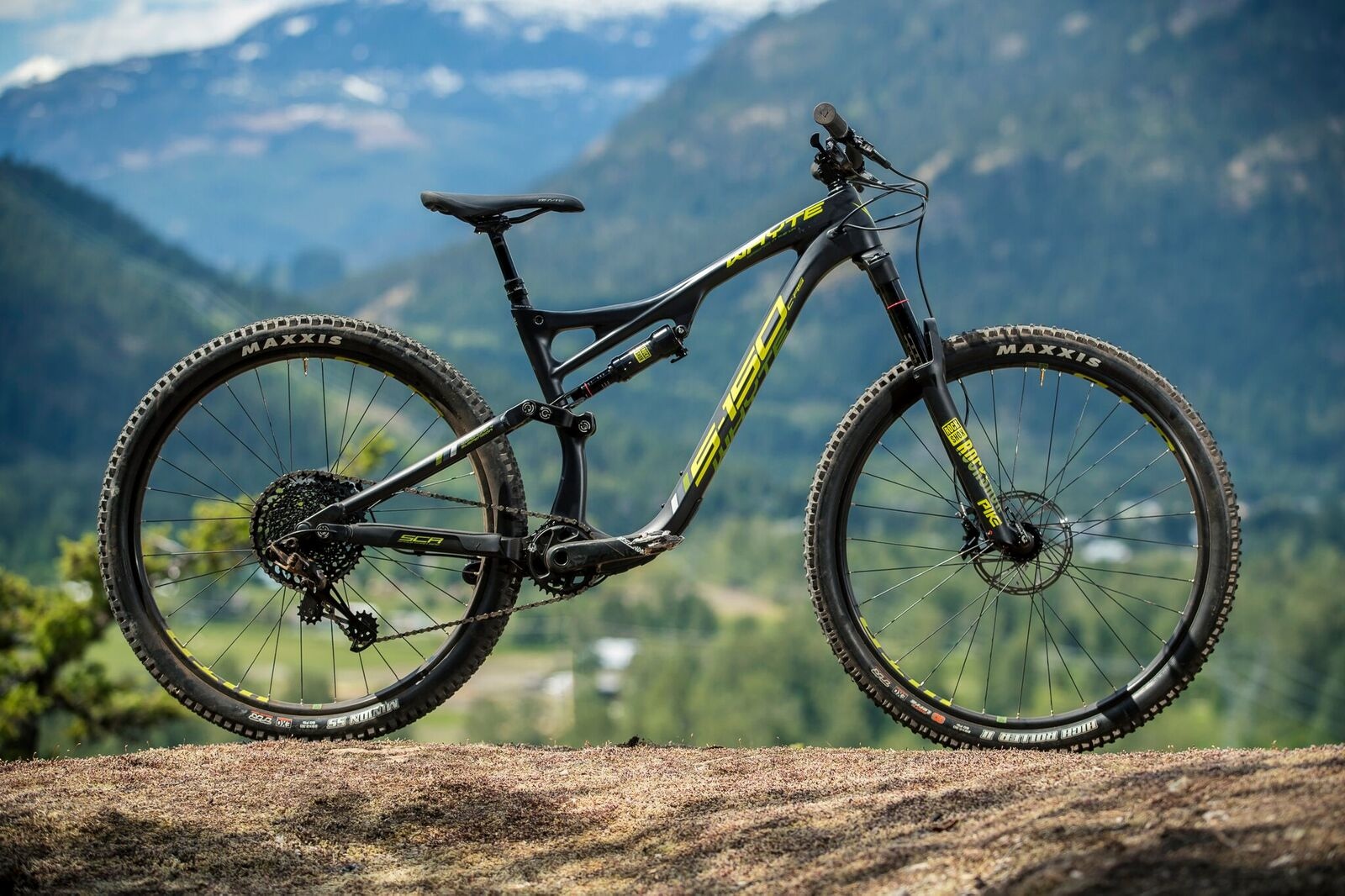
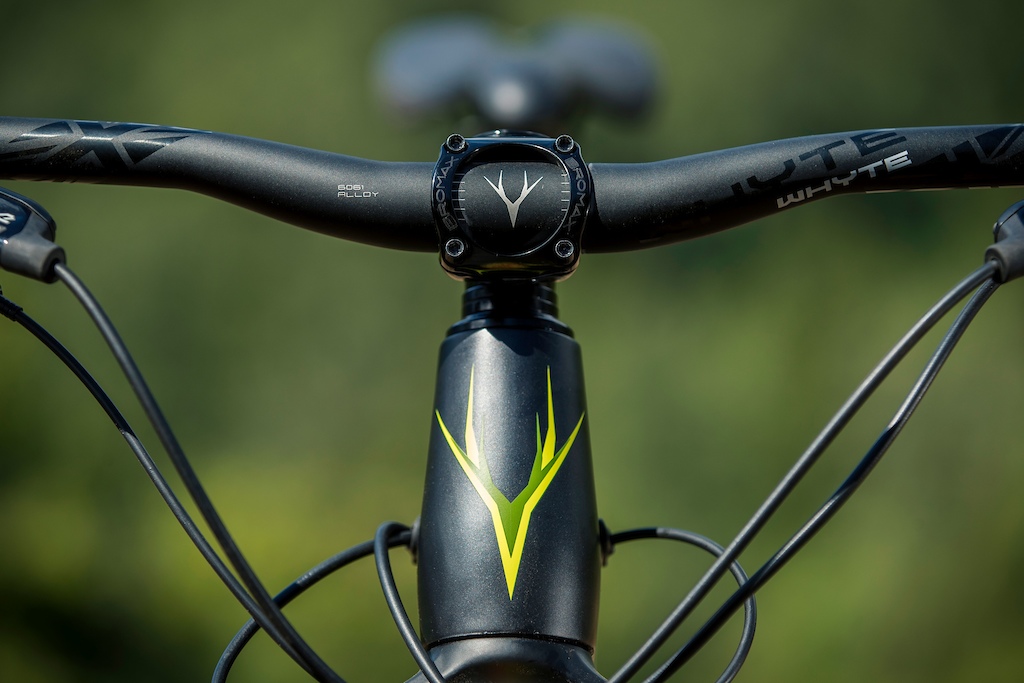
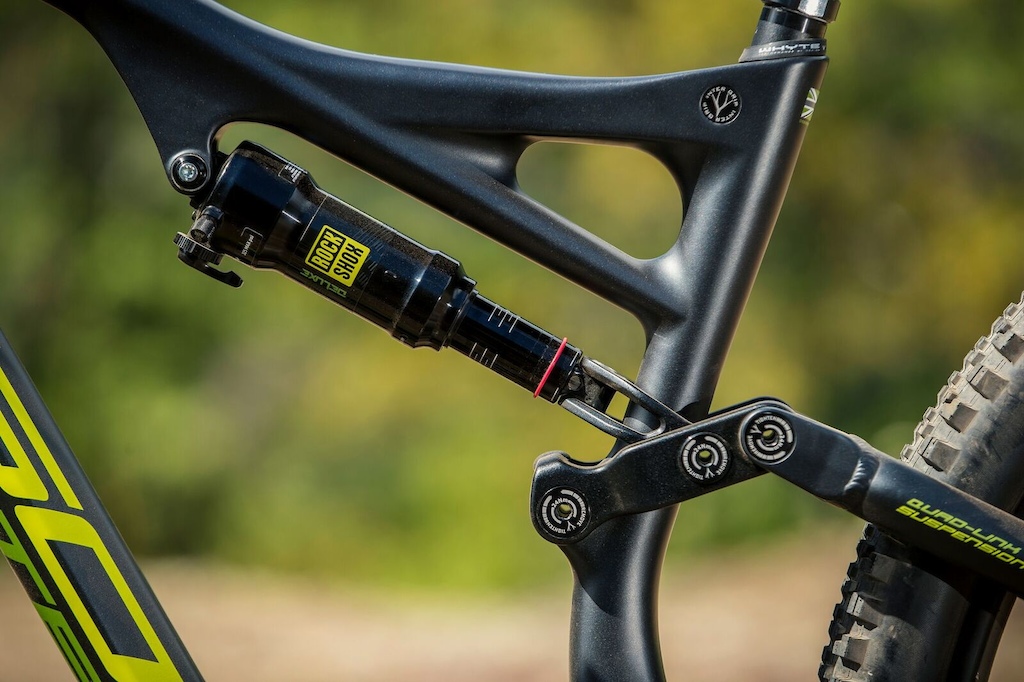
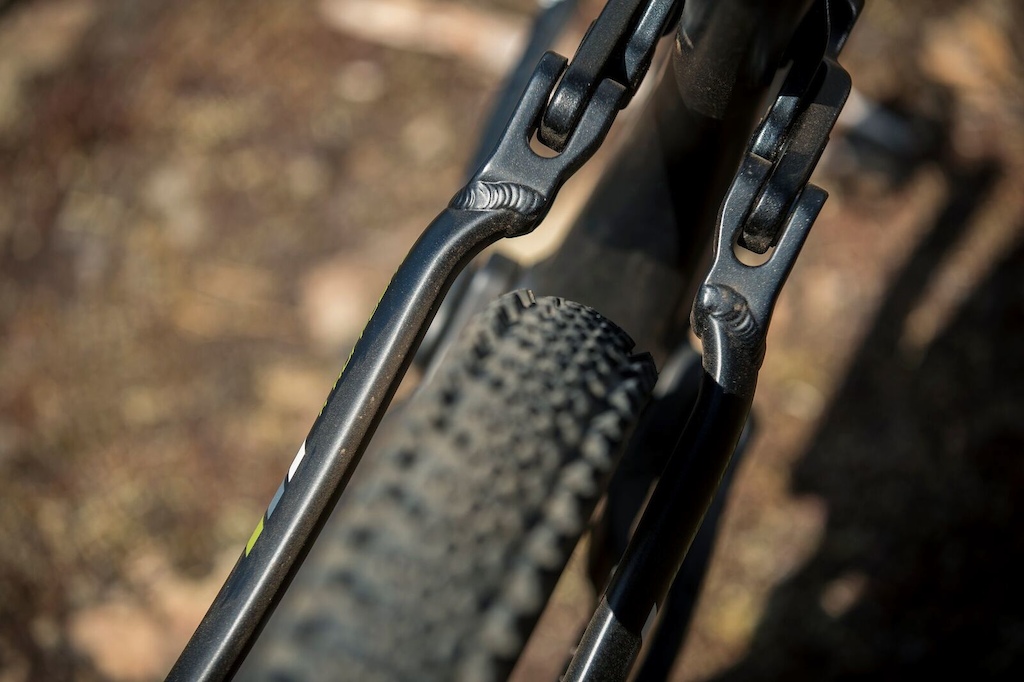
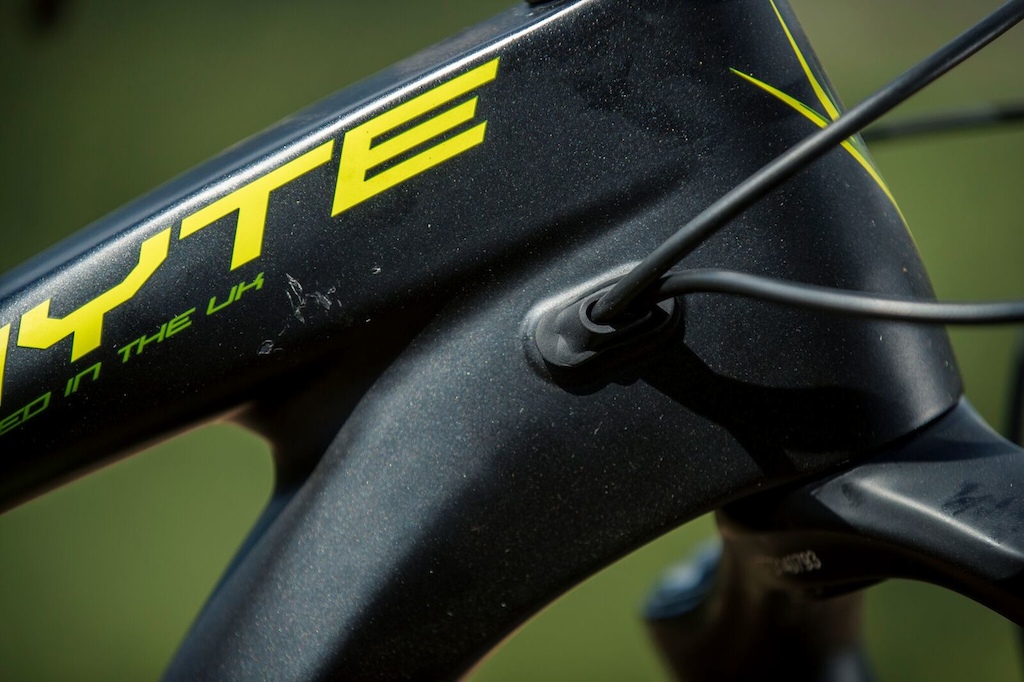
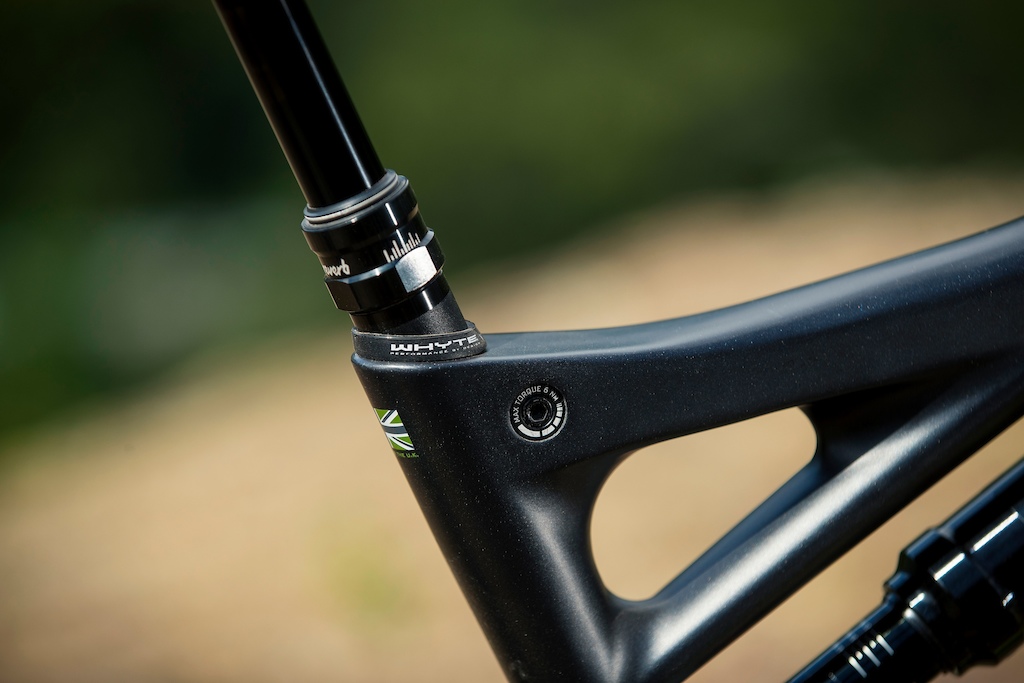



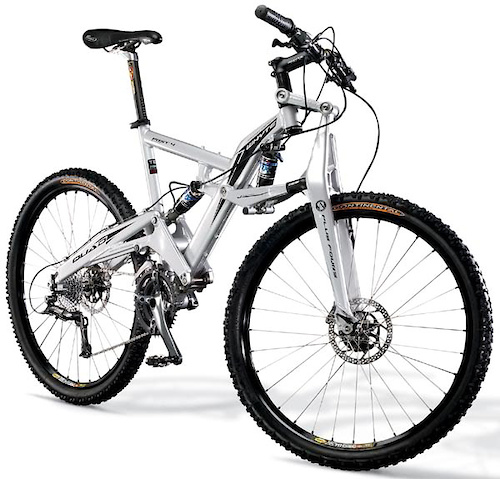
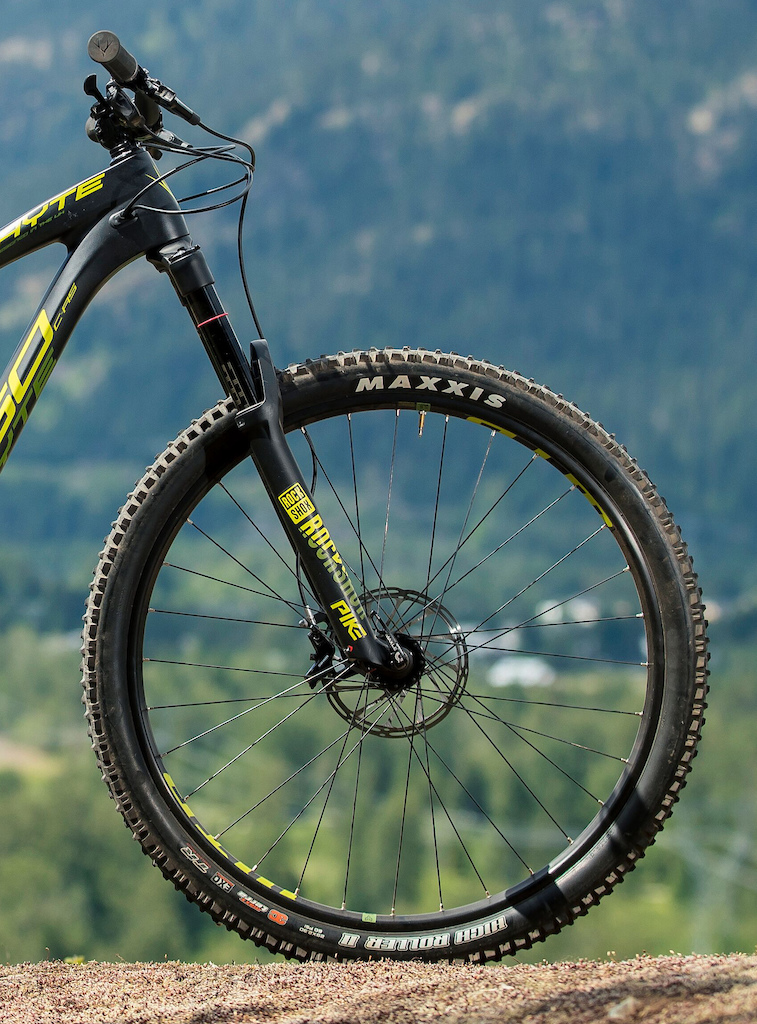

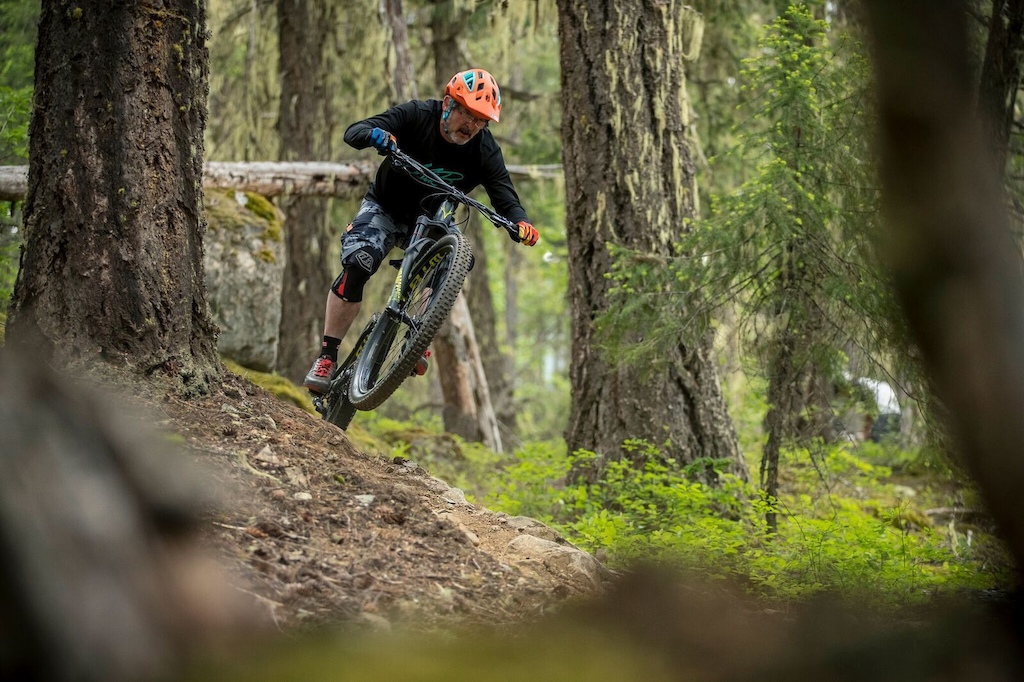
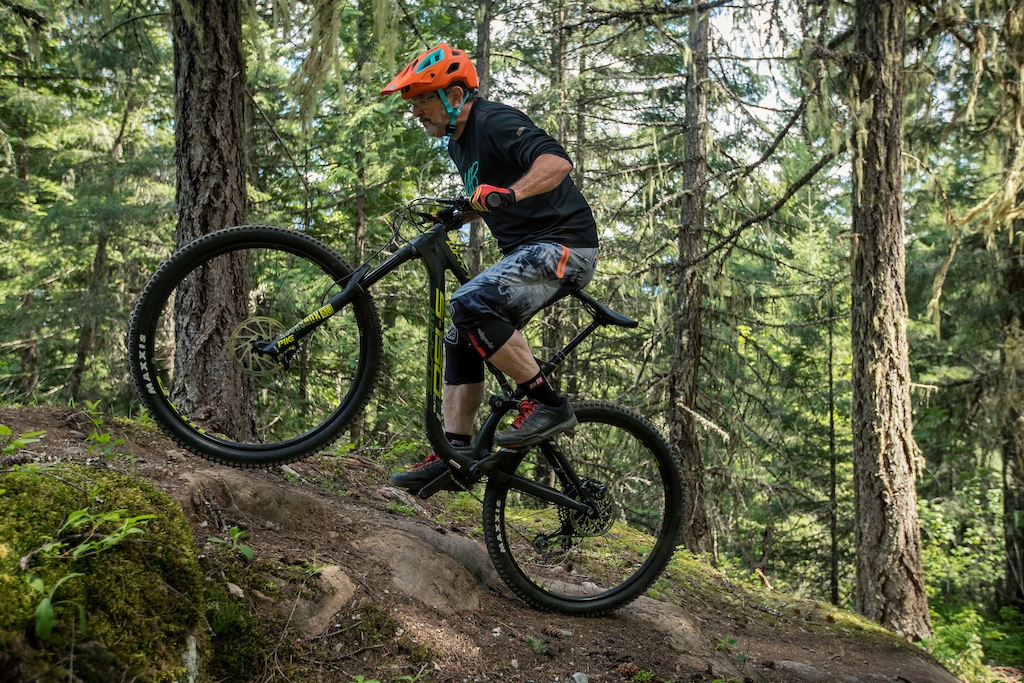

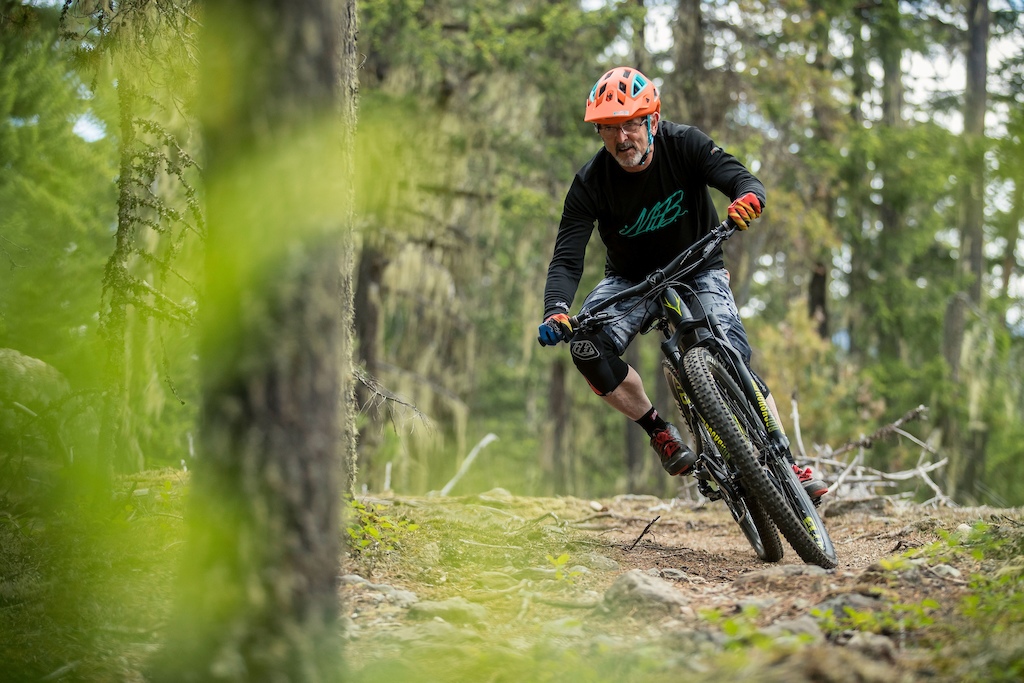

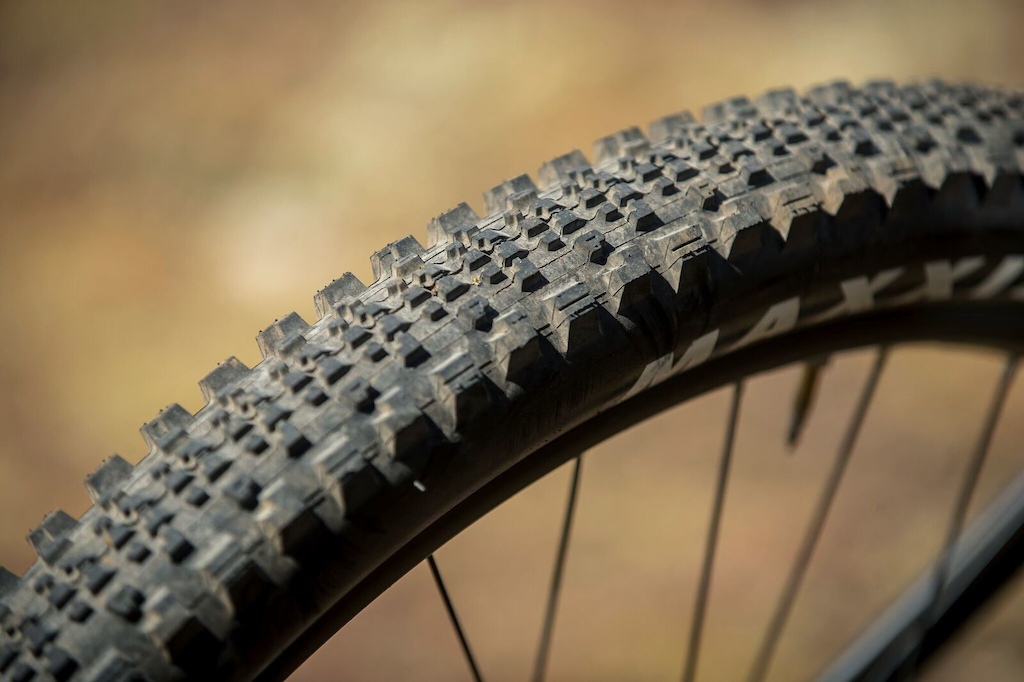

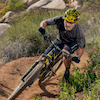
new and improved formula? Well if it's new how can it be an improvement over a product that already exists. Does it make ANY actuall gains?
The only way ti get around it is going fully bespoke but with it comes a price tag.
I guess the solution us to wait until you think things have settled down or buy something that is at the forefront so in 5 years time it will be middle of the pack.
How much money can Honda spend on R&D?
Of course, a bicycle is a bit more dynamic than most vehicles given the large influence of the rider's body and as a result needs a bit of experimentation to dial in, but the math is the same with respect to the bike.
Not trying to knock Whyte's stuff, but that's just a ridiculous statement.
www.cbc.ca/news/technology/science-of-cycling-still-mysterious-1.3699012
No, engineers/mathematicians/scientists have definitely not figured out how all this works. A lot of it, yes, but all of it, no. The problem is that, as much as people have defined certain elements that contribute to the self righting system that is a bicycle, it is possible to build one that veers away from those elements (no pun intended), and still have it work. Elements that were thought to be critical, as it turns out, aren't.
The challenges that the Whyte designers are attempting to overcome seem to be in the realm of subjectivity, which if anything is more challenging than a discrete, black and white math answer. I have no doubt that experimentation could improve the handling of a mountain bike and that the ideal steering geometry is likely dependent on the rider and the trails they ride.
As @thekaiser said, some things (like gyroscopic effects from wheels or trail) are rumored to be the holy grail and singularly important values, but that's not the case. That isn't to say, however, that we don't understand what makes a system stable/unstable. Non-conventional designs may rely strongly on one trait (trail, mass distribution, gyro, even aerodynamic drag in some applications) that allow a bicycle with traits that would normally be deemed unstable to be stable.
In the end, a large matrix of reactions, couples, angles, inertial components, etc work down to a single eigenvalue. This eigenvalue can be computed for various speeds, and the stability of the system at those speeds can be determined using the PBH test. To my knowledge, there has never been a bicycle designed which steering dynamics deem unstable which is instead self-stabilizing without an active steering/lean correction system. Correct me if I'm wrong.
For those who are interested and have a bit of linear algebra experience, here is a revealing paper:
www.princeton.edu/ssp/64-tiger-cub-1/64-data/stability-of-motorcycles.pdf
More on the PBH test:
stanford.edu/class/ee363/lectures/inv-sub.pdf
Almost forgot to look this up, thanks for your patience. The proposed ideal trail as depends on the wheel loads is (a/b) (Nf/Nr) where a and b are the front and rear normal trails and Nf and Nr are the loads (as they become normal forces) on the front and rear wheel. The argument is due to the fact that a greater load on the front wheel means that less trail is required to achieve the same aligning torque. Probably this formula needs a bit of reconsideration for the dynamically shifting loads of a mountain bike.
@shredteds:
Those are some juicy references - thank you.
If anyone is interested, Cornell has a modest repository of bicycle dynamics articles that might be worth perusing.
ruina.tam.cornell.edu/research/topics/bicycle_mechanics/overview.html
When did trails evolve so much we suddenly need a enduro bike? Too much bike is not fun. I've been there.
Same thing goes for 120mm 29". A light, 65/75 with a fairly progressive leverage rate would be a total weapon for guys who don't live where the trails are fast but not too chunky, but it'd also make an amazing XC race bike for guys who race XC but aren't roadie/dentist types. We're being drip fed these tiny incremental changes by mostly clueless manufacturers.
(goes to Whyte's website)
"Currently Unavailable"
Why wouldn't a brand just delay this review by XX days so that I can read it, research it and purchase it?
@RichardCunningham There are more and more of us who believe that better geometries should be the next battlefront. We are slowly getting there, but each newly released bike we see seems to omit some parameter in the equation or the improvement is just meaningless.
29ers in DH happened this year because of the FOX 49. A mainstream 29er DH fork was required before major teams would make the jump.
Too bad all Porter and Co experiments have largely been ignored by FOX. Can't say I'm that into buying a 36 29er then swapping to 275 CSU.
The MRP Ribbon gets 160mm at 46mm offset for a 29er for less.
Transition did not get Sram or Fox on board with this new (Chris Porter's) idea, but the other way around. They were just the first to get the word out and coined a new marketing acronym - SBG.
No doubt I'll be able to get a short offset CSU for $500 at some point.... Lucky me.
Full suss is far more complicated. 26 has been around for what 40 years or something and they only got that figured in the last few (if at all). It needs time and testing and companies who are willing to think outside the box and try things that are unconventional. It also doesn't help that most companies are making carbon bikes with expensive mounds in far off lands. Locally made metal bikes are far easier and cheaper to get "wrong" before you get them right.
There's some very shaky engineering reasoning in the article, even if the slack+low offset geometry does work.
Have you tried a longer reach bike or do you not like the way longer bikes ride?
This whyte certainly isn't for shorties like us unless you like to push the bike that's for sure, plenty of other less aggro stuff out there though.
Your point about pushing these bikes at speed on bigger more open trails is a good one...I could maybe contend with the long front center if I only rode on higher speed bike park style trails trails but at slower tighter more technical speeds.........no chance-downright scary
I do agree with what you said, first time I've looked at a Large and thought that's on the upper end of my size range.....I can't see how a big bike would work in the UK for me......still theres no need to bring your usain bolt fetish into this Lee